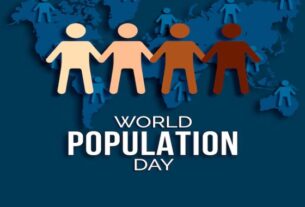1.Poliovirus
Start with an attention-grabbing opening that details the surprising finding of poliovirus in nine environmental samples. This discovery presents important public health issues, especially for areas that were previously deemed polio-free. Emphasize the importance of this progress as well as the possible difficulties it presents. Stress important terms such as “polio risk,” “poliovirus found in environmental samples,” and “public health concern.”
2. What is it?
Describe the poliovirus, a highly contagious virus that can paralyze people and predominantly affects youngsters. Talk about how it targets the neurological system and can sometimes result in irreversible disability.
a. International Initiatives to End Polio
Explain the significance of international immunization programs and the World Health Organization’s (WHO) attempts to end polio.
3. Health dangerous to Environmental Poliovirus
Significant public health concerns are raised when poliovirus is found in environmental samples, especially for populations with poor vaccination rates or those with impaired immune systems. Modern sanitation techniques can help limit the spread of the extremely contagious poliovirus, but any remnants of the virus in the environment, particularly in wastewater or sewage, suggest a possible risk of transmission.
a. The possibility of permanent disabilities and paralysis
Particularly in young infants, poliovirus can cause acute flaccid paralysis, a condition in which muscles become weak or limp. Rarely, this can cause irreversible paralysis, which usually affects the legs, one side of the body, or even the muscles of the breathing system. This danger emphasizes how urgently any virus exposure must be avoided, particularly in susceptible groups.
b. Effect on Under-Immunized or Unvaccinated Groups
There is a far greater chance of the virus spreading in areas where polio vaccination is lacking. Infected individuals may infect others and perhaps spread the virus if they come into touch with contaminated surfaces or water. A public health emergency could arise if further cases are reported in areas with low vaccine coverage.
c. The danger of poliovirus derived from vaccines (VDPV)
Vaccine-derived poliovirus (VDPV) can change into a form that resembles wild poliovirus when it spreads in areas where vaccination rates are low. This means that it may cause disease and paralysis just like the natural virus. This highlights the significance of preserving high vaccination rates even in areas where polio has been eradicated for many years.
d. Risk in Areas Free of Polio
By reintroducing the virus, environmental poliovirus could endanger areas that are polio-free. Even though many regions have been deemed polio-free, every environmental poliovirus finding increases the risk of reinfection for those who are exposed, particularly if vaccination campaigns are not kept up to par.
e. Impact Healthcare Burden
Rapid response measures, such as vaccination drives, hospital resources, and public awareness campaigns, would be necessary in the event of a polio outbreak brought on by environmental transmission. Financially and in terms of public health infrastructure, this can be a significant burden for nations with little healthcare resources.
Also Read: Coastal Karachi on High Alert: Cyclone Approaches the Region




